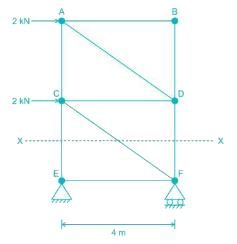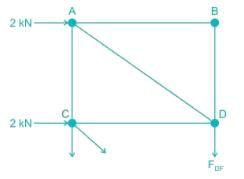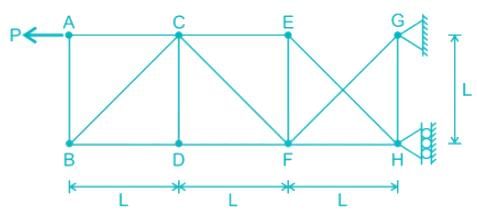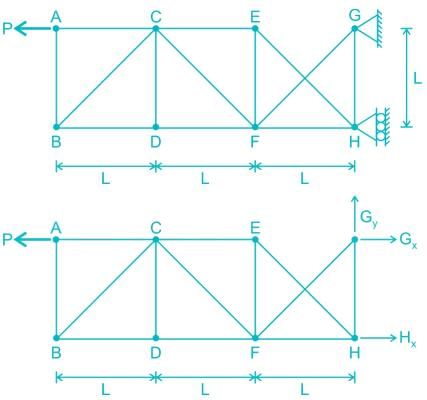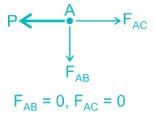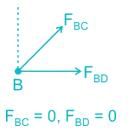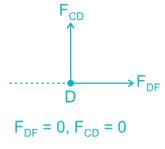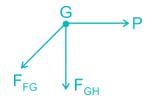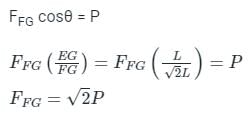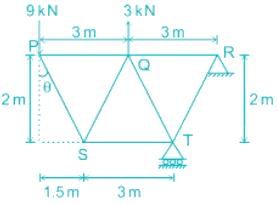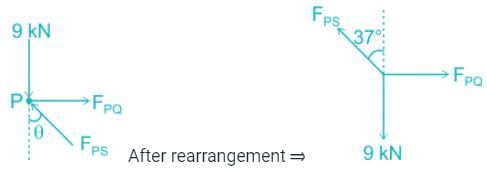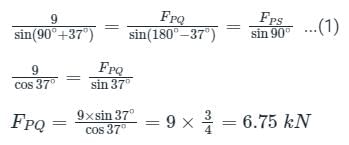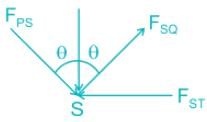Test: Method of Section - Mechanical Engineering MCQ
10 Questions MCQ Test - Test: Method of Section
A pin-jointed tower truss is loaded as shown in the below figure. The force induced in the member DF is
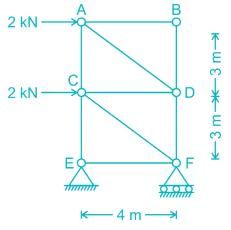

Two steel truss members, AC and BC, each having cross sectional area of 200 mm2 are subjected to a horizontal force F as shown in figure.
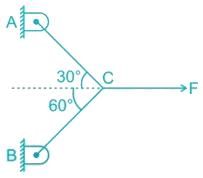
If F = 2 kN, the magnitude of the vertical reaction forces at the point A and B are:

If F = 2 kN, the magnitude of the vertical reaction forces at the point A and B are:
For the truss shown in the figure, the forces F1 and F2 are 9 kN and 3 kN, respectively. The The force (in kN) in the member QS is
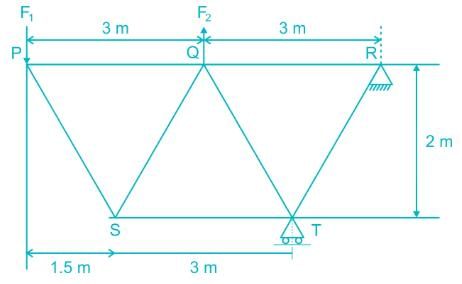
Method of section cuts the whole structure of trusses into a section and then uses the cut out portion for the calculations of the unknown forces. For this method, at most two forces must be collinear.
The method of joints helps us to find out the unknown force in the trusses joint. And the method of section helps us to make the calculation of the direction of the zero members.
Why the determination of the support reaction needs to be done before isolating the section?
The determination of the truss’s support reaction is done first and then the section is isolated for the method of the section.
We have three method to solve for the unknown force in the trusses. They are method of section, method of joints and rotational vector method.
The free diagram of the section of the truss is made for the section having the least number of the forces. This is done as to make the calculations easy.


